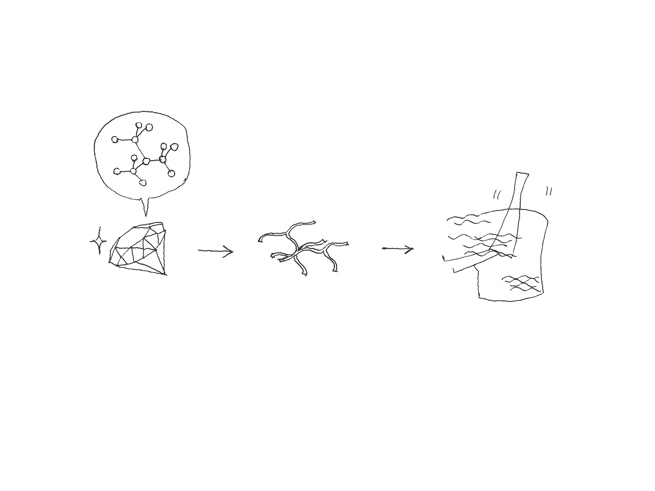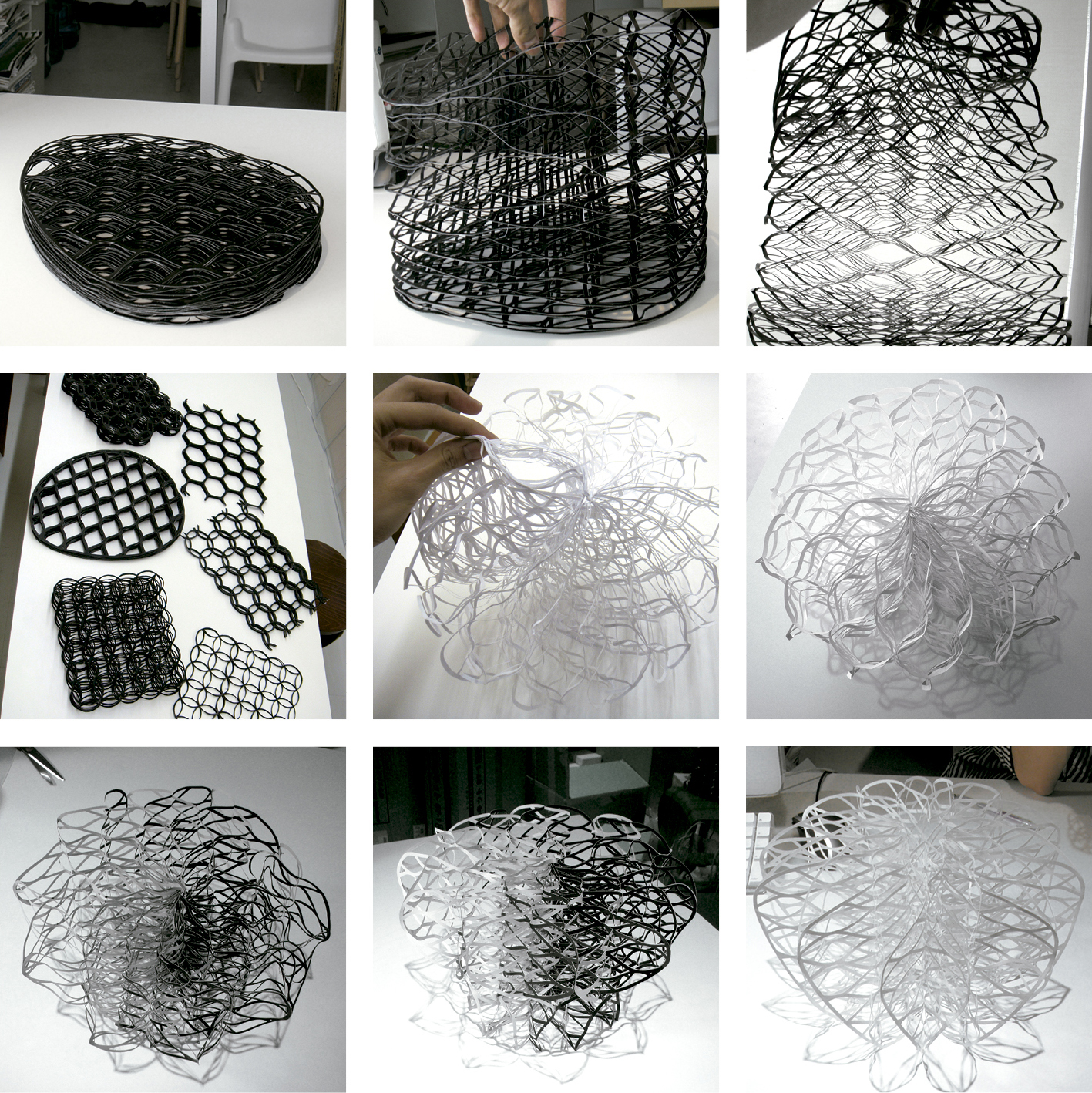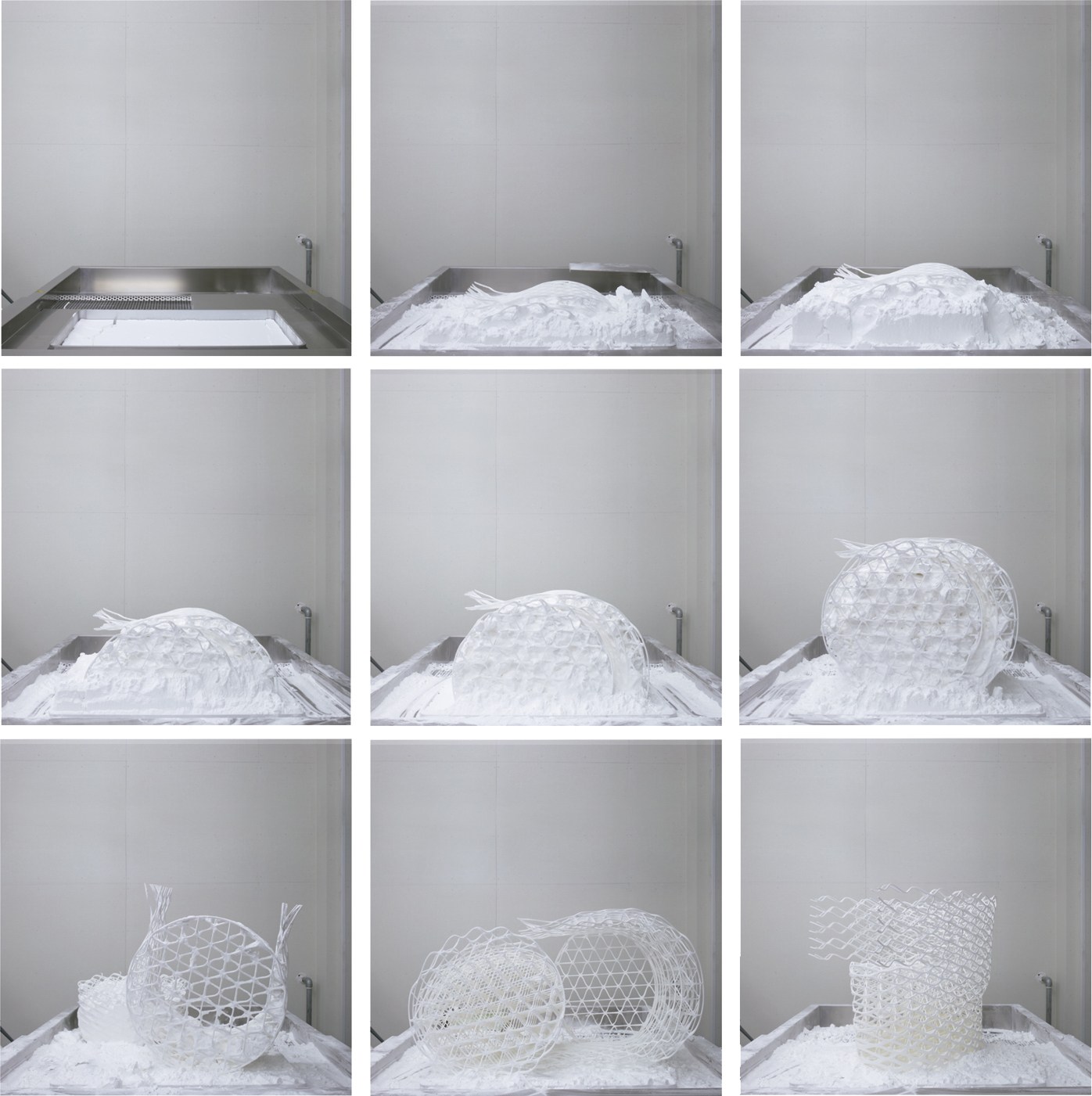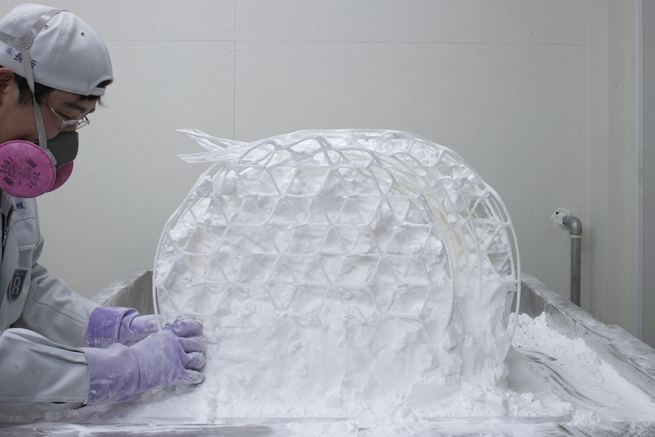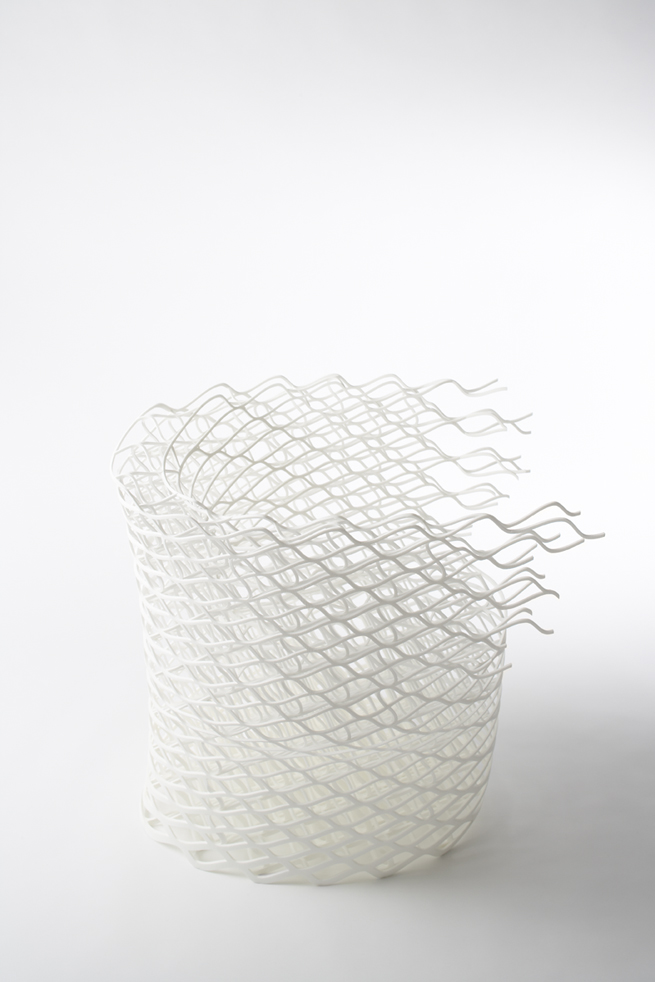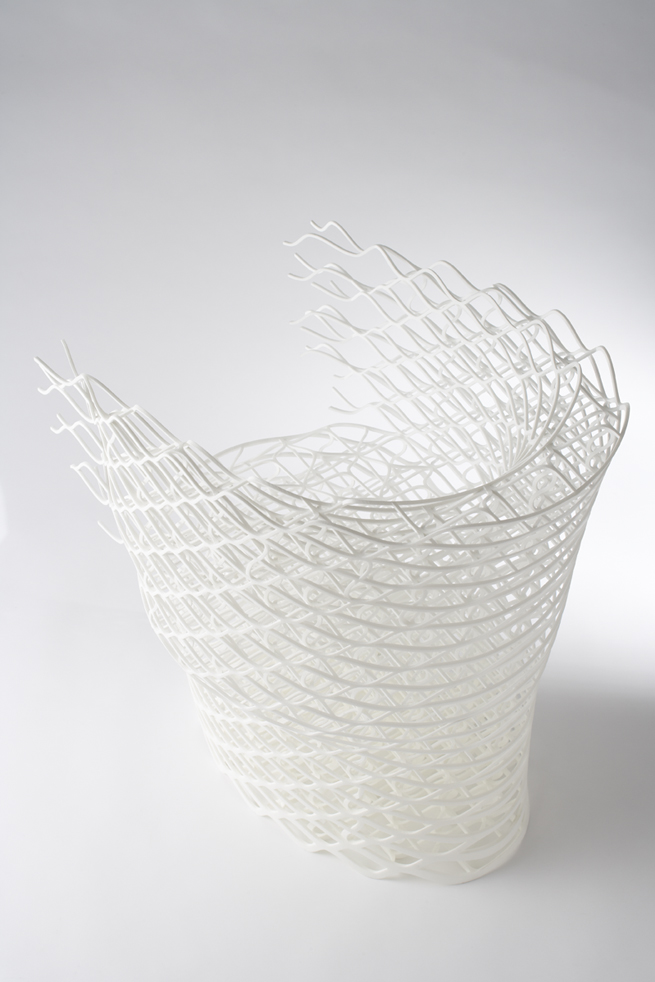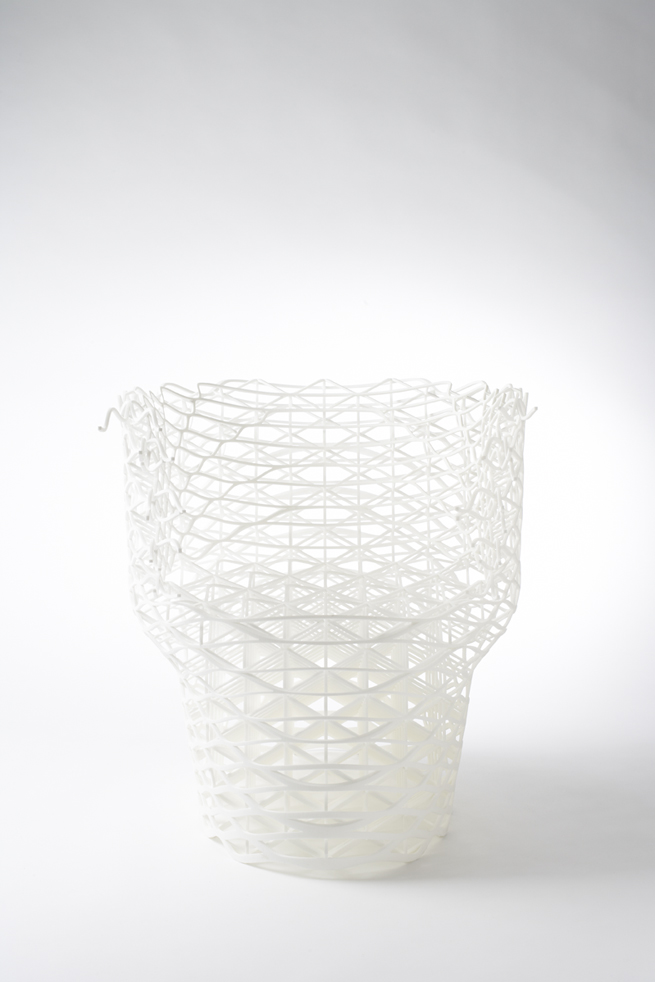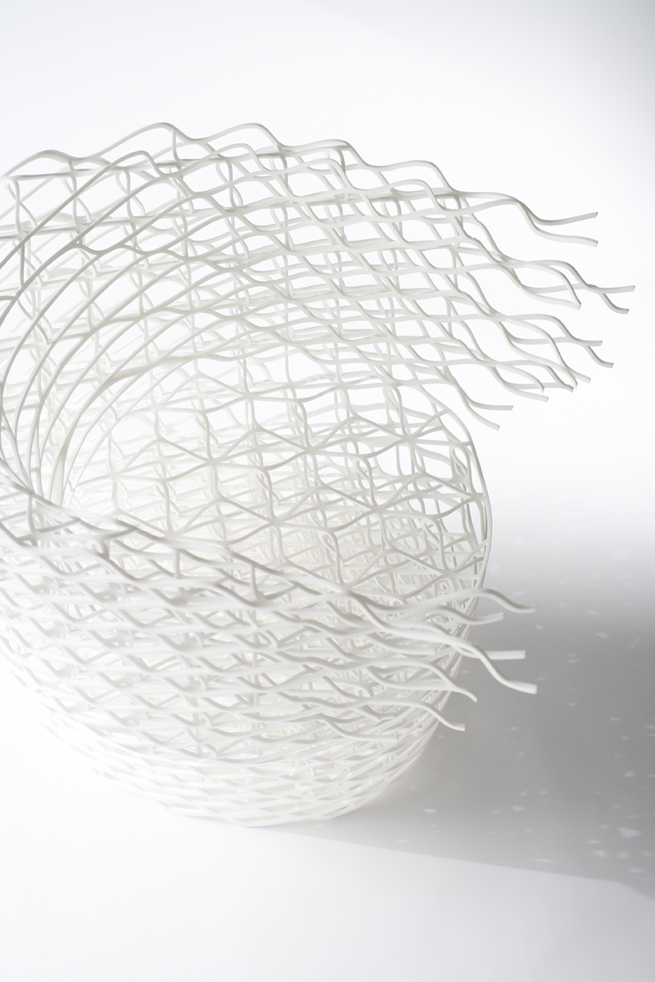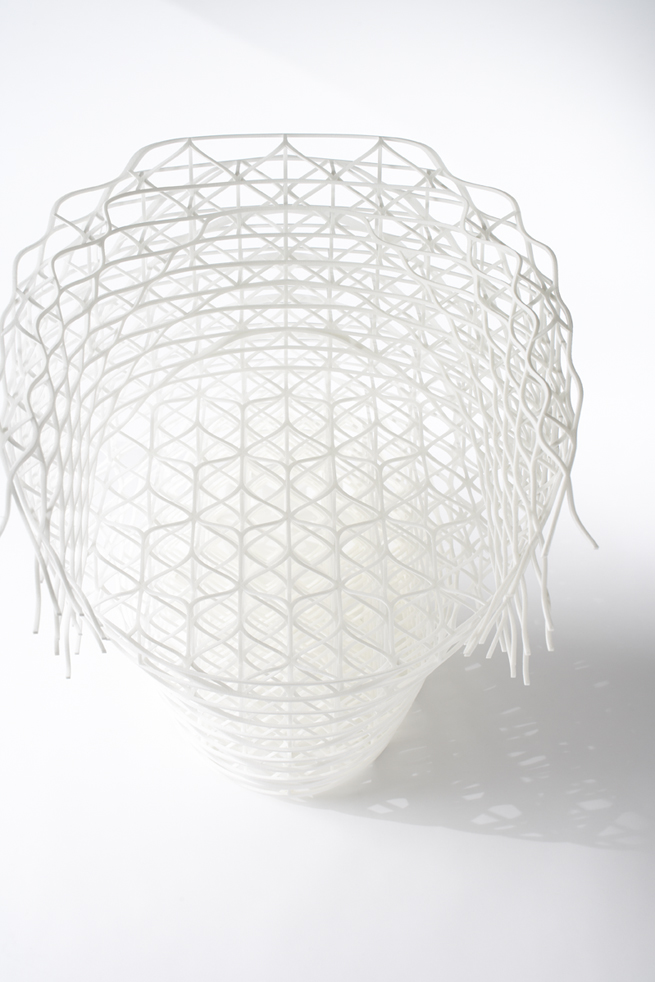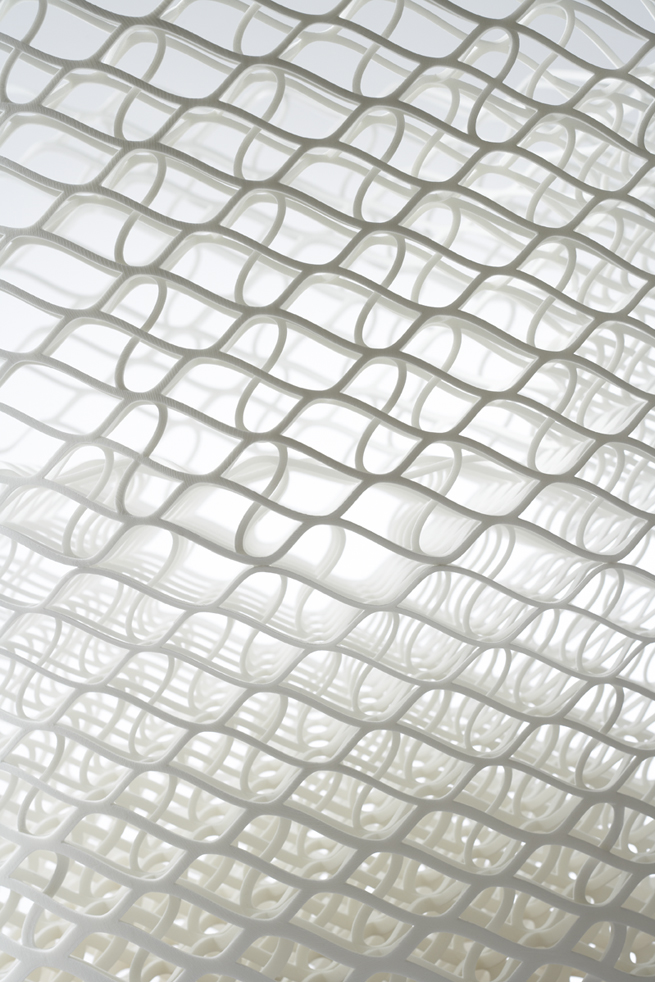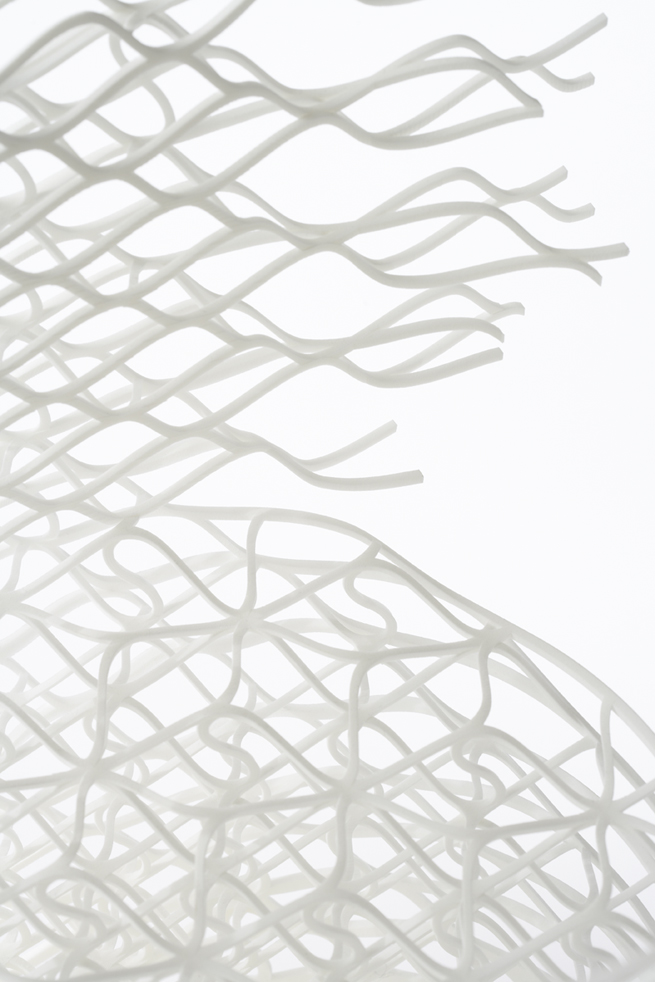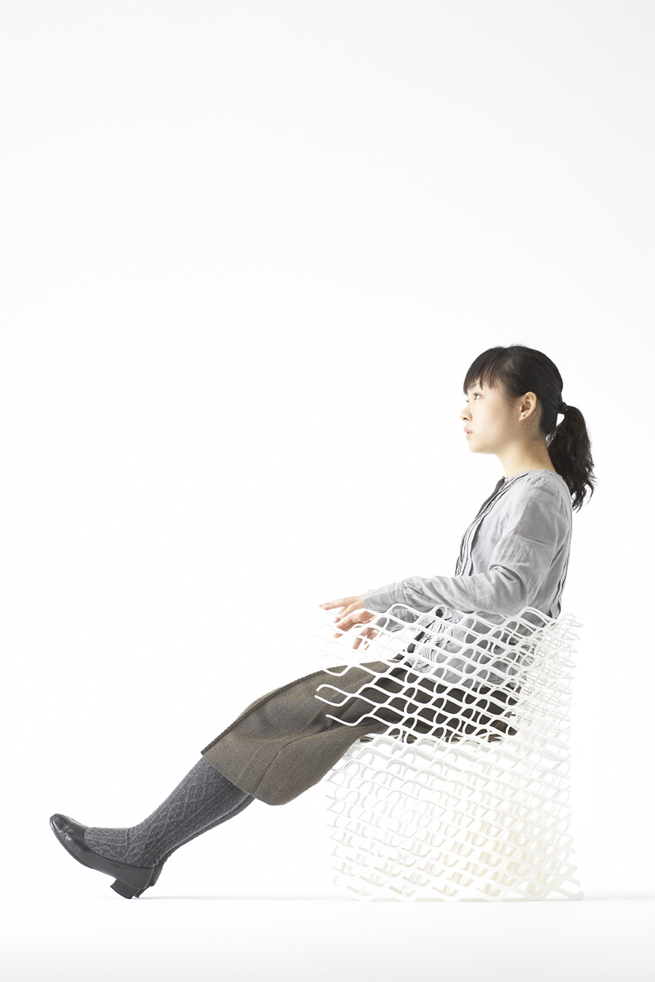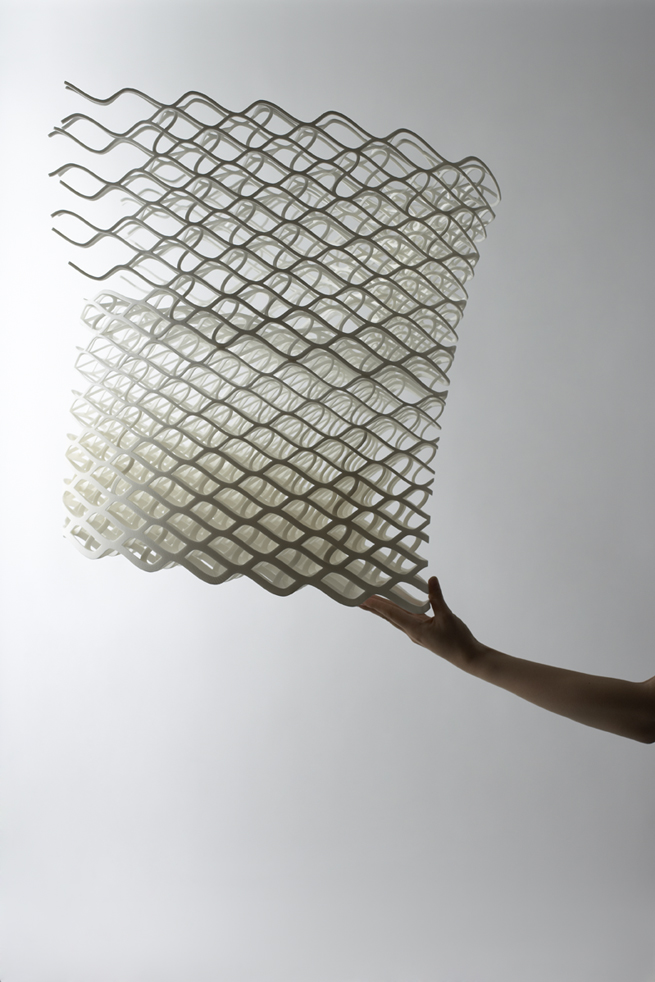diamond chair
The dense and atomic structure of a diamond efficiently disperses strength and light throughout the material, giving diamonds their singular hardness and shine. We designed a “strong but flexible” structure that used this atomic array as a motif, and wanted to devise a chair that would respond to pressure by absorbing rather than resisting it, and had the suppleness of human organs or muscles.
We created such a structure through powder sintering rapid prototyping technology that uses a laser to transform polyamide particles into a hard mold based on 3D CAD data. The RP technology let us add thickness where users need support, and to carve away the material into a thinner, more flexible and responsive thickness in places where users want comfort, allowing one material to serve multiple purposes. There is a limit to the size of an object an RP machine can produce, so we designed the chair in two pieces that snap together like a puzzle, and attached them after each piece had hardened. This not only let us control cost and production time, but also, since the pieces are cast at the same time, eliminated the problem of parts not fitting together exactly during assembly because any shrinkage or distortion due to heat occurs at the same time and the same rate.
We’re not planning to mass-produce the chair, but since it only takes five to six days to produce, a manufacturer would not have to worry about keeping it in stock, and overseas orders could be filled by sending data overseas for production on a local RP machine, drastically cutting shipping time and cost. In other words, the diamond chair project showed us that in the near future, we may well solve problems that have long plagued the furniture industry.
